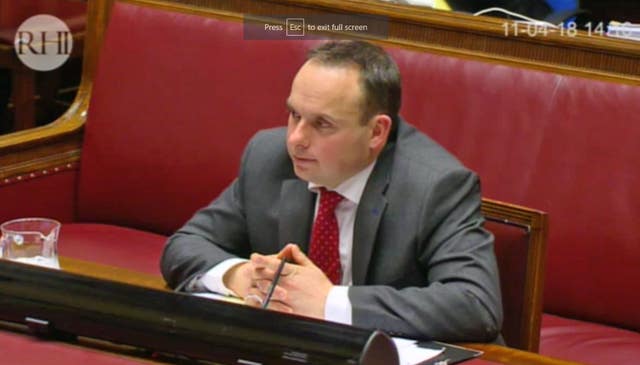Energy was not Arlene Foster’s favourite brief during her time at the Department for Enterprise, Trade and Investment, the RHI Inquiry has heard.
During her first evidence session, which lasted for over three hours, the DUP leader disclosed that she did not understand all the nuances of the complex brief and preferred the areas of tourism and economic development.
However, renewable heat was a European directive that had to be dealt with, she said.
“I did rely on my officials in energy to help me to understand all the complexities,” she said.
“Did I rely on them more than I relied on officials in tourism or economic development? I probably did.”

But Mrs Foster insisted there was no less scrutiny of submissions from energy division officials.
“There was no skim reading involved,” she added.
She was quizzed about the role of her special adviser Dr Andrew Crawford.
The political appointee assisted with the nuts and bolts of policy development, the inquiry heard.
“He was someone who was very good with detail,” said Mrs Foster.
She said Dr Crawford was first appointed when she was at the Department of Agriculture and had an expertise in reading documents before they were presented to her.
But, Mrs Foster noted: “I don’t think either of us were experts in the energy division.”
Given the novelty, complexity and cost of the scheme, inquiry chairman Sir Patrick Coghlin expressed concern that Dr Crawford had not read in detail key reports on which the initiative was based.
“That just seems to me to be perhaps not the highest standard of governmental practice,” he said.
Later, Mrs Foster rebuffed suggestions that information or queries may have been deliberately left off some documents so they could not be recorded.
Only “innocuous” comments were recorded on post-it notes, she claimed.
“There was nothing on any post-it notes to my memory that would have caused concern,” she said.
When probed further about any “political” advice potentially written on the sticky labels, she added: “We are talking about a post-it note here. We are not talking about an A4 page.
“It is inconsequential ‘speak to me’, ‘X won’t like this’ blah blah blah.”
Mrs Foster told the inquiry that with hindsight it was a regret her department did not “buy into” the GB renewable heat incentive scheme.
She said: “It is a regret that we didn’t buy into the GB scheme but I was being led by evidence and by officials as to what was the best way forward.
“Now, with hindsight, it would have been better to have been in the GB scheme because clearly then we would have been able to take on board all the things that they were doing with the scheme.”
She also drew “comfort” from the fact that there were a lot of “checks and balances” before the scheme went live in 2012.
Meanwhile Mrs Foster signed off on the RHI scheme during a meeting in 2011 but had no recollection of the meeting, it emerged.
The DUP leader is expected to resume giving evidence on Friday.
